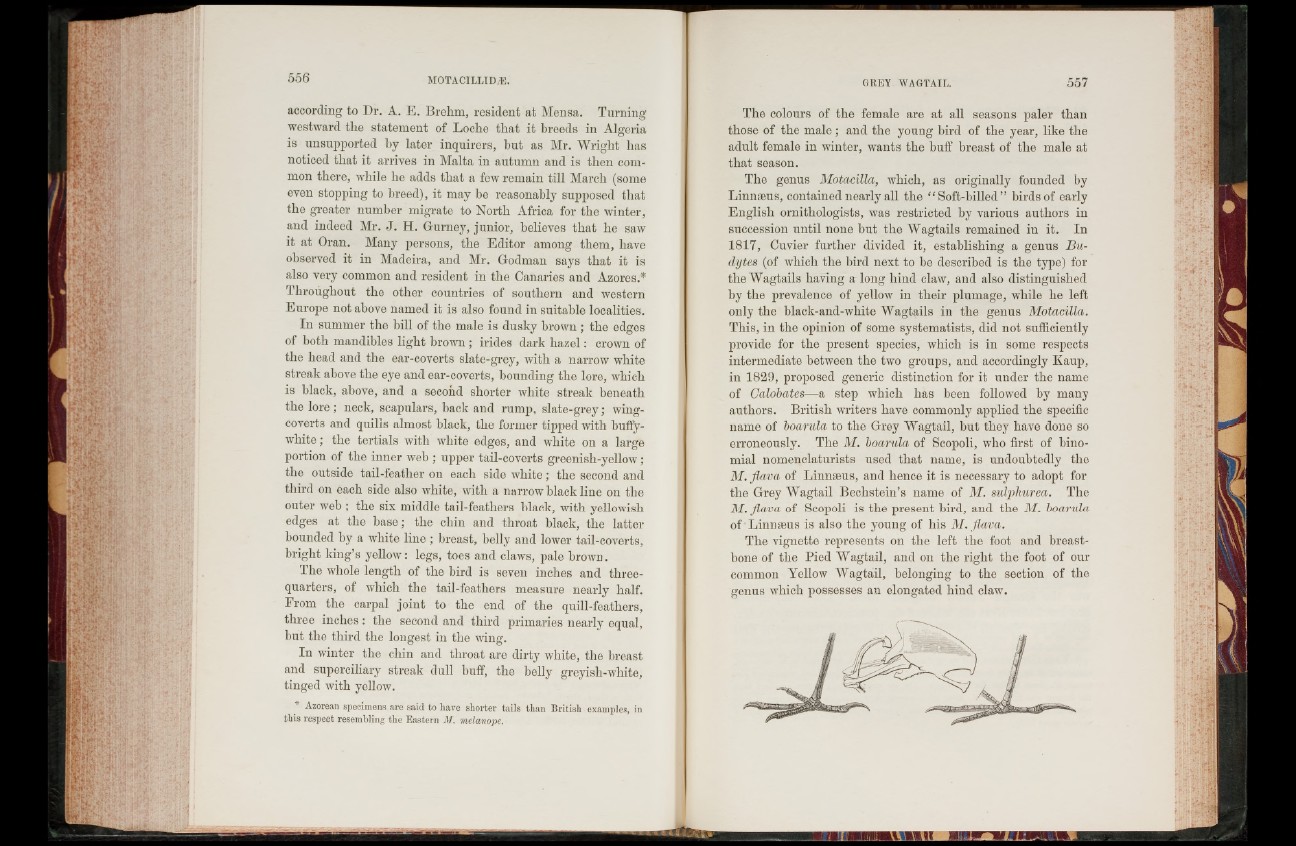
556 MO TA C IU jTDvE.
according to Dr. A. E. Brehm, resident at Mensa. Turning
westward the statement of Loche that it breeds in Algeria
is unsupported by later inquirers, but as Mr. Wright has
noticed that it arrives in Malta in autumn and is then common
there, while he adds that a few remain till March (some
even stopping to breed), it may be reasonably supposed that
the greater number migrate to North Africa for the winter,
and indeed Mr. J. H. Gurney, junior, believes that he saw
it at Oran. Many persons, the Editor among them, have
observed it in Madeira, and Mr. Godman says that it is
also very common and resident in the Canaries and Azores.*
Throughout the other countries of southern and western
Europe not above named it is also found in suitable localities.
In summer the bill of the male is dusky brown ; the edges
of both mandibles light brown ; irides dark hazel: crown of
the head and the ear-coverts slate-grey, with a narrow white
streak above the eye and ear-coverts, bounding the lore, which
is black, above, and a second shorter white streak beneath
the lore; neck, scapulars, back and rump, slate-grey; wing-
coverts and quills almost black, the former tipped with buffy-
white; the tertials with white edges, and white on a large
portion of the inner web ; upper tail-coverts greenish-yellow;
the outside tail-feather on each side white; the second and
third on each side also white, with a narrow black line on the
outer web ; the six middle tail-feathers black, with yellowish
edges at the base; the chin and throat black, the latter
bounded by a white line ; breast, belly and lower tail-coverts,
bright king’s yellow: legs, toes and claws, pale brown.
The whole length of the bird is seven inches and three-
quarters, of which the tail-feathers measure nearly half.
From the carpal joint to the end of the quill-feathers,
three inches: the second and third primaries nearly equal,
but the third the longest in the wing.
In winter the chin and throat are dirty white, the breast
and superciliary streak dull buff, the belly greyish-white,
tinged with yellow.
* Azorean specimens are said to hare shorter tails than British examples, in
this respect resembling the Eastern M. melanope.
M M
GREY WAGTAIL. 557
The colours of the female are at all seasons paler than
those of the male; and the young bird of the year, like the
adult female in winter, wants the buff breast of the male at
that season.
The genus Motacilla, which, as originally founded by
Linnaeus, contained nearly all the “ Soft-billed” birds of early
English ornithologists, was restricted by various authors in
succession until none but the Wagtails remained in it. In
1817, Cuvier further divided it, establishing a genus Bu-
clytes (of which the bird next to be described is the type) for
the Wagtails having a long hind claw, and also distinguished
by the prevalence of yellow in their plumage, while ho left
only the black-and-white Wagtails in the genus Motacilla.
This, in the opinion of some systematists, did not sufficiently
provide for the present species, which is in some respects
intermediate between the two groups, and accordingly Kaup,
in 1829, proposed generic distinction for it under the name
of Calobates—a step which has been followed by many
authors. British writers have commonly applied the specific
name of boarula to the Grey Wagtail, but they have done so
erroneously. The M. boarula of Scopoli, who first of binomial
nomenclaturists used that name, is undoubtedly the
M. flava of Linnaeus, and hence it is necessary to adopt for
the Grey Wagtail Bechstein’s name of M. sulphurea. The
M. flava of Scopoli is the present bird, and the M. boarula
of Linmeus is also the young of his M. flava.
The vignette represents on the left the foot and breastbone
of the Pied Wagtail, and on the right the foot of our
common Yellow Wagtail, belonging to the section of the
genus which possesses an elongated hind claw.